The Rise of Japanamerica
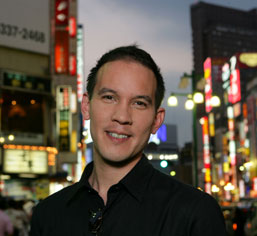
What made you decide to write this book?
Palgrave commissioned me to write a comprehensive but accessible book for general readers while I was in New York in 2005. But the impetus originally came from interviews I had been doing years earlier with people like Haruki Murakami and Nigo. Nigo and a number of other artists had been telling me how when they were younger, everything came from the West into Japan. Nigo in particular felt that it was quite natural that when he became an adult, he and people of his generation would want to return the volley. That concept of sending things the other way and its various implications convinced me to explore writing the book.
Writing this book has also been quite encouraging for me as a half-Japanese American. There are many dispiriting things about the so-called ‘globalized’ world today, but there was something inspiring in writing about the concurrence of cultures.
So as for the overall process that you’re describing in the book, the increasing popularity of Japanese manga and anime in America, to sum up for the readers, the two questions you had in your book are Why Japan and Why now?
This is not just an animation boom, it’s a wider interest in Japanese culture. Many Americans are now obsessed with Japanese food, in New York particularly. After the sushi craze, it’s now shifting to yakitori and shochu. So I began to wonder what it is about this Japaneseness – and it’s very hard to pin down – this idea that there are certain aesthetic characteristics of Japaneseness that have hit the Zeitgeist.
Music video for Gorillaz, Feel Good Inc.
In terms of animation, American series like The Simpsons, Beavis and Butthead and South Park did break some of the walls down and made US viewers realize that they can look at animation as something more adult-themed. But in my research, I found so many young Americans who really wanted animation that came from Japan. It has influenced pop music, too. Jamie Hewitt, who does the artwork for the anime-like British band, Gorillaz, is a huge fan of Miyazaki, so much so that he lifted Castle in the Sky for the Feel Good Inc. music video as a kind of homage. And we watched Madonna dancing with cartoon images of Gorillaz to open the 2006 Grammy Awards.
Video of Madonna performing with Gorillaz at the 2006 Grammy Awards.
As a comparative argument, some people point out to me that anime has been huge in China and elsewhere in Asia. However, the Asian continent is much closer to Japan, and the interest in manga there has been going on for a lot longer than it has in the West. 10 years ago, the major anime convention in the US drew in 20,000 people for one afternoon, but now it’s 50,000 people on each day of a four-day event; it’s tough for exhibitors to get a booth in these conventions, and if you’re a fan, it’s tough to get tickets. That’s a huge change in a relatively short period of time.
How much is this really happening across the whole of the US, as opposed to the urbanized centers on the East and West coasts?
I continue to be surprised by how far this phenomenon has penetrated into Middle America. People living in places like Ohio or West Virginia or the deep South are getting their manga and anime primarily through the Internet. The second wave of support comes from public libraries, which in the US remain very extensive. For example, there are small-town libraries in rural regions of Georgia with manga clubs that meet once a week. The librarians are very supportive because it’s bringing kids back to their shelves.
Another remarkable aspect to this phenomenon is the positivity surrounding the use of the word otaku in the US and the UK. In Japan, it has a mixed reception: the word came into being as a formal or distanced way of addressing someone you don’t know or are too shy to admit knowing. However, in the US and the UK, otaku is almost universally positive: it’s seen as a cutting-edge term, a badge of honor.
Manga and anime have become a socializing phenomenon: nobody is embarrassed about being in a manga or anime club, whereas in Japan it might still make you a loser. The fostering of these communities through libraries, conventions and events helps refresh the scene for fans: what they have discovered on their own online or on the back shelf of a library is bringing them into contact with other human beings.
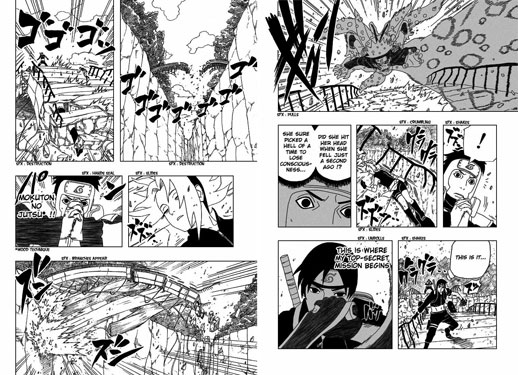
So the Internet has played a large part in speeding up the dissemination of manga and anime. What about the language barrier?
English-speaking manga fans are going to fan sites to read ‘scanlations’. These are translations done by fans who add subtitles to a manga, scan each page, and post the entire text online. ‘Fansubs’ are the same, but with anime, and the clips are then posted online. This means that a kid in California can potentially download a translated or subtitled version of a manga or anime within 24 hours of its release in Japan. The process takes as long as is necessary for the person at the Japan end to get the English done. Of course, some of these are very clunky translations, but most of the manga being translated is not philosophy, so schoolkids are able to manage it.
Are these translations being done for the benefit of others alone? There’s no money involved?
That’s right. Some of the fan sites are able to get advertisers to link to the site and sell products that are related to Japan, but the dedication of these fans is phenomenal. They scan these thick manga books and translate the whole thing: it’s hours and hours of work.
The degree of accessibility and the speed at which the material is becoming available is incredible. But the appeal comes down to the value of the art itself. If the quality, or the appeal of that quality didn’t exist, then it wouldn’t matter how many scanlations there are or how quickly they become available.
But just like the illegal download of music, while peer-to-peer sharing is helping spread awareness of this medium, isn’t it also playing a part in killing the industry that produces it?
It is. Most of the industry professionals in Japan – although not all – have been coasting on their successes with domestic demand. It’s kind of ironic that part of the reason so much of this stuff remains distinctive and fresh to Westerners is that it has been produced in relative isolation. There was no international market before, and Japanese producers weren’t really trying to build one. So one of the challenges they face, especially the older generation of producers and publishers, is achieving a mental sea change in which they can think about selling on an international scale. A lot of them are scared. They can barely keep up with the demand in Japan, let alone from outside as well.
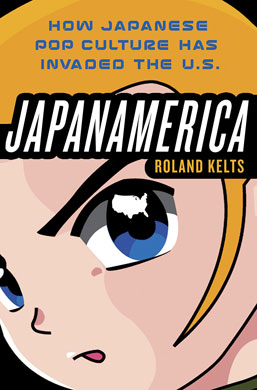
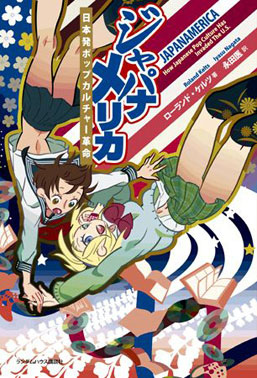
Given how helpless the Japanese anime industry is, why is the book’s title Japanamerica: How Japanese Pop Culture has Invaded the U.S.? What you are describing is not so much an invasion of the West but a process of cultural permeation, and if anything, the only invasion going on is a corporate invasion of Japan by the West, and not the other way around.
You’re absolutely right. The subtitle was not my idea, although I approved it. My publisher was thinking of American readers and how they might understand this contextually. You might have people of a certain age and a certain background wondering what Japanese pop culture is. The idea was that with the term “the British Invasion” from the 1960s, when the Beatles and the Rolling Stones came to America, the idea of a new cultural ‘invasion’ would ring true to people who came of age in that era. The title was designed in part to help parents identify what their children’s generation is experiencing. It was meant benignly, but in terms of a metaphor, it’s not quite the right image. Unfortunately, ‘how Japanese pop culture permeated the US’ sounds a tad too clinical.
If the English version was written with an American audience in mind, has that changed now that it has been translated into Japanese? Is the Japanese version of the book still written from an American point of view?
At my publisher’s request, I did write an afterword that is directly addressed to the Japanese audience. I asked Japanese friends to read the Japanese version of the book and asked them whether it was an issue worth addressing and they all said yes. One Japanese newspaper reviewer wrote that the main reason why Japanese people should read this book is they will find it free of Western prejudices about Japan, but also – interestingly – free of Japanese wariness. What’s been most gratifying since the release of the Japanese edition is having so many members of the industry and hardcore fans and journalists tell me how much they learned from the book. Japanese readers cite the new perspective, the narrative quality of the book, and the number and diversity of interviews with real people. They also note how much of the economic analysis and raw business data has never been published before, in any language. I give a lot of credit to British journalist Leo Lewis for tracking down that information.
Some of the important industry figures you interview are giving very frank and honest answers about the problems they face. I wonder if it was easier for them to be that open under the assumption that what they were saying would only be published in English, and wouldn’t be directly assessed by their peers. Did they know that what they were saying would be published in Japanese later on?
No, because I didn’t know at that time. The foreign rights sales happened a few months before the book’s publication, so there was no way I could have known or even guessed that it would appear in Japanese. Some of them might have assumed that their words would not be read by a Japanese audience and been more open as a result of that, but I wasn’t thinking about that when I was writing or conducting interviews.
I do think most of my subjects were savvy enough to realize that what they said on-the-record to me, and what I might write, would be read by an audience that could well be bilingual. And that, with the hyper-speed cross-pollination and translations made possible by the Internet, their comments would be available to readers worldwide. I very carefully vetted all of my interview transcripts with translators, double-checking comments with my subjects whenever anything was unclear.
One indication of their approach was if their assistants were sitting in on the interview or not. Part of an interviewers’ technique is to get the interviewee a little worked up; not angry, but excited enough to open up a way into further conversation, or even revelation. There were a couple of occasions when a subject said some pretty harsh things, and then after the interview, the assistant would come over to me and say, “You know that thing he said about so-and-so? Please don’t use it…” None of it was relevant to what I was trying to uncover anyway.
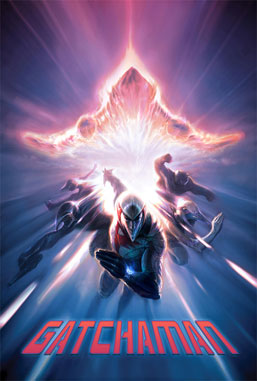

This book is potentially a massive wake-up call for the Japanese: a clear warning that this art form they hold dear is being taken for granted, and is now under the threat of both domestic collapse and foreign takeover. Was this in any way a deliberate strategy of yours?
I think it just emerged out of the process of research and writing. When I started my research, I didn’t anticipate that I would discover that the industry was facing such obstacles, many of which are of its own design. These kinds of discoveries drove me to go on writing the book. I was very wary of merely churning out an account of how popular manga and anime are. It’s been done before, and if that’s the whole story, it’s a magazine article at best. Discovering the dissonance between American and Japanese thinking is far more fascinating.
I didn’t aim for this book to work as a specific device or guidebook, of course, but it has been picked up by a number of people in the entertainment industry in the US. The CEO of Imagi Animation Studios in Los Angeles, where they’re currently producing Gatchaman and Astroboy as feature films, told me that my book had been an eye-opener for Hollywood in understanding manga and anime, and he had bought two boxes of it to distribute to his entire staff. He said the book essentially explains the reasoning behind their business plan, and that as they release the films, they plan to send it to producers in LA to educate them about the context of these new films.
Meanwhile, in Japan, the book is being handed around the Foreign Ministry, where they’re talking about using ‘manga diplomacy’ as a government-initiated mechanism to promote Japanese popular culture overseas. In a sense, the book really is serving as a kind of bridge across the ocean.
In the book, you describe the rise of a new generation of Americans who are talented manga artists. Do you think the future of the manga industry could see a process of hybridization taking place?
At least overseas, I think there will be. Whether the Japanese domestic market would embrace that or not is really tough to predict, because there are still so many titles and subgenres that don’t work abroad, and so much to choose from in Japan. A lot of Japanese people say that manga is not mainstream, and of course to some extent they’re right: it’s not mainstream Japanese culture the way, say, kimono or yukata or even some TV dramas are. They are many Japanese who know of manga and anime but are not fans. But then it’s becoming harder and harder to define what mainstream culture is.
I’ve talked about the question of hybridization with people in the field, and certainly there’s the feeling that the industry will become more diversified in the US. In fact, it already is: you have manga titles out there created by African-Americans, you have a lot more Korean manga, called mahwa, and anime in the US, and you have publishers like TokyoPop fostering manga creators in their American fan-base, which is ethnically diverse. Rather than the rise of American talent, though, the fear in Japan is far more about China and the emergence of a young generation of middle or upper-middle class Chinese who are really confident, talented, and exist in the numbers to have a huge impact on the Japanese manga and anime industry.
The trailer for Afro Samurai, starring Samuel L. Jackson.
What do think manga’s influence is on contemporary art? Takashi Murakami and Makoto Aida show the influence of manga in their work. What’s the difference?
I think a loose distinction one can make between the two comes down to the artist’s goals. Certainly there are highly talented manga artists who produce drawings with phenomenal detail, but their goal is still to tell a story, to use the artwork to service a narrative. Murakami and Aida don’t have quite the same objective: their art is not serving so much a storytelling function as it is being made to stand on its own as autonomous artwork. The viewer, as with all art, goes into his or her art trance with the work and explores possible meanings, some of which may be coded, but it’s not a narrative. I would say those two artists are using the history and character of manga and anime—a history that spans over sixty years—to create a commentary, both on their sources and the world in which they find themselves.
What do you mean when you say in the book that creativity is born out of trauma?
Well, that’s a cliché—and I don’t state it as a hard rule. Human creativity is as diverse as its sources, and I don’t believe that trauma is a prerequisite. But the rise of the forms we know today as manga and anime emerged in the 1950s, particularly via the great Osamu Tezuka, out of severe national trauma, caused not only by two nuclear bombs and other devastations, but also by the collapse of Japan’s Imperial Divinity and the disruption of that national narrative. Cultures tell stories about themselves, and the presence of a divine Emperor was a central element of the story Japanese told themselves about their culture – and it was smashed in an instant.
It’s inaccurate to say that the specific experience of the atomic bomb fuelled generations of manga and anime artists. As Fred Schodt points out in my book, artists working in subsequent years were probably more influenced by the social upheavals in Japan in the 1970s, and the rapid urbanization and industrialization of the 80s, and so on.
What I mean is that the trauma of the war helped to create new frameworks of expression that could take extreme feelings and outrageous emotions and uncontainable pain and express them in an effective and moving way. It created a framework for that expression–rather like the emergence of punk music in the UK at a time when social and economic injustice was rife. British artists, responding to trauma, first established that framework, but now you can go to Shibuya and hear a Japanese band using it; they may be expressing something very different, but the point is that they have an art form that enables them to express it.

Is the current young generation of manga artists as driven by this sense of trauma, given that they have been born and brought up in a comparatively non-traumatic age of material wealth?
A lot of the great material that came out of the late 1970s and 80s was being made by artists who had a far deeper connection to the protests against Vietnam, against the renewals of the US-Japan Security Treaty, and to the harsh repression of those protests. They were far more driven by those cracks in Japanese society and westernization than they were by the experience of World War II, but they were using and advancing this art form that emerged two to three decades earlier as a conduit for their expression.
The youth of the last five to ten years have grown up in comfort without any defining movement in Japan. As one university student recently told me, “We’re the risk-averse generation.” She explained that for people of her generation to become artists would be a huge risk, as it would be very hard for them to maintain the standard of living that they’re used to. This is not a problem specific to Japan of course, but people in the industry have generally been saying that the best animators are all over 40. Steve Alpert from Studio Ghibli described the situation as being like the Rock and Roll industry in the late 1980s and early 1990s before Nirvana hit: everyone was just waiting around for the Rolling Stones to get back on the road and do another stadium tour.
Is there no new talent?
There are plenty of incredibly talented people. Just recently I was interviewing a Japanese producer who works with Hollywood to manage deals for Hollywood feature films based on manga. One of the things she told me she considered too sacrilegious to risk being quoted on. She said that while Osamu Tezuka was a great pioneer, she could name at least 30 young artists working right now who are technically far better artists than he was. Her feeling is that young people will eventually gain positions of power and transform the animation industry. But this will be a slow process. So much of the industry is still ruled by these chain-smoking guys in rumpled suits who just shake their heads in dismay at where things are going.
To find out more about the book, visit the Japanamerica homepage.
Ashley Rawlings
Ashley Rawlings



